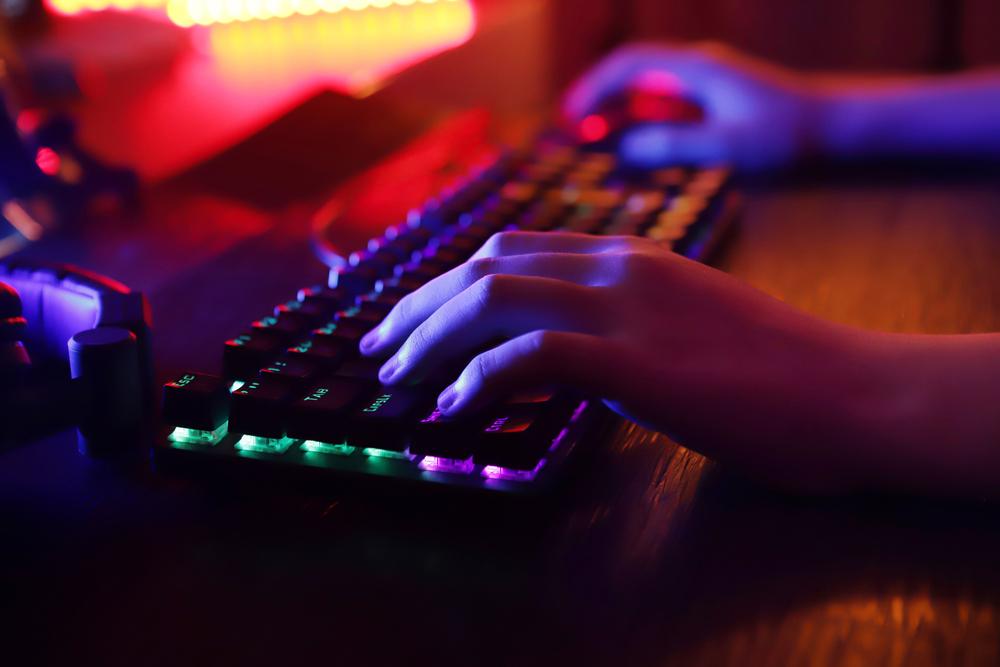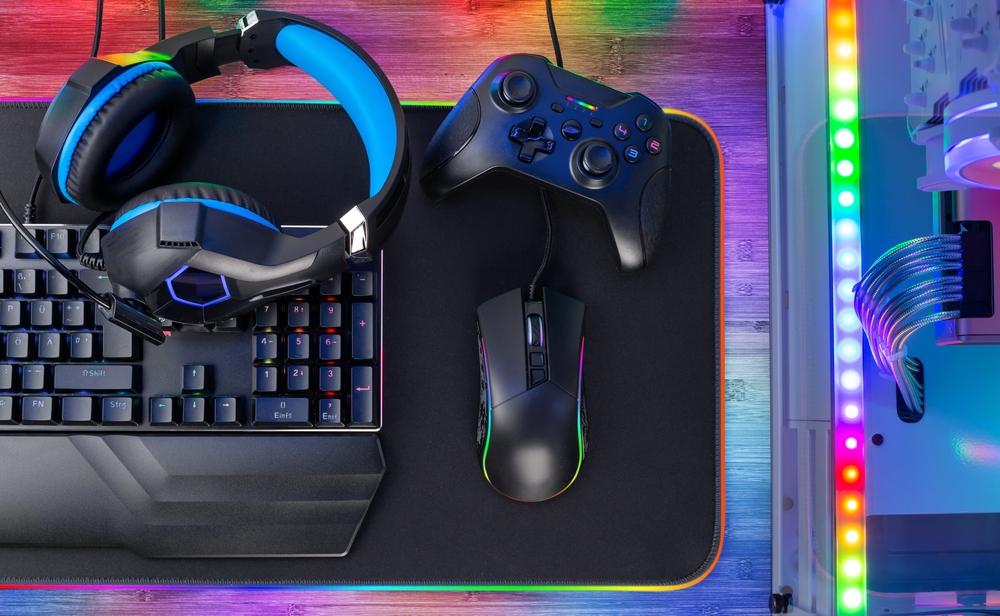RGB lighting won’t boost your frame rate, speed up your internet connection, or make you better at Valorant. But it does look very cool to have those dazzling chromatic lights shining from every corner of your gaming PC — and we all deserve to treat ourselves, right?
We encourage you to exercise the right to turn your gaming setup into a neon spaceship paradise. What’s more, there are so many ways to do RGB that practically any gamer can find a way to fit it into their decor scheme! Up ahead, witness six cool RGB schemes that will show you the light.
1. Install RGB bias lighting on your TV or monitor.
Bias lighting is a fancy term for attaching a light strip to the back of your display. Lots of gaming experts recommend it because it can make a display’s contrast look substantially better while reducing the eye strain of playing in a dim room. And while most people use soft white lights, nothing is stopping you from using RGB!
Grab a couple of LED strips and some sticky pads to attach them to the back of your monitor or TV. Mount the strips around the outer edge, making sure they don’t peek over. Plug them in and then bring up your favorite game or TV show and appreciate the difference! Note that using colored bias lighting might have minor effects on color accuracy, so you might want to stick with white while doing anything where super-accurate color is important (like graphic design).
2. Install RGB hardware in your PC case.
Leave it up to PC gamers to turn something as practical as coolers, case fans, and sag brackets into RGB rainbow machines. These hardware pieces, designed for purposes like increasing PC case airflow and holding graphics cards in place, are now RGB-equipped favorites of gamers who want to cram the maximum amount of psychedelic LEDs into their PCs.
From fans to RAM to riser cables for graphics cards, you’ve got a bonanza of choices for adding RGB hardware to your PC. Many of these offer some ability to sync their LEDs with other PC components. Pro tip: If you’re buying anything (like a case fan) that plugs into the motherboard’s RGB headers, find out whether your board has 12-volt or 5-volt RGB headers, as the two connector types aren’t compatible.
3. Use RGB floor lamps to add color to every corner.
Why confine RGB to your desk area? Make a full-sized gamer nest for yourself with some RGB floor lamps! These are an excellent choice if you want to make RGB a big part of your decor, and it also gives you an easy way to set the vibe by choosing your desired color. Most include a remote that allows you to switch up the palette with the flick of a dial.
Floor lamps look especially good when paired with other RGB lamps, like hex lights, desk lamps, or even faux-neon RGB signs. They can provide all kinds of new looks for your favorite art, plants, furniture, or gaming peripherals, so experiment a bit (and maybe even stage a little photoshoot).

4. Choose peripherals (like your mouse and keyboard) with integrated RGB.
Mice, keyboards, headsets, even charging stations — you’ll find cool integrated RGB lights on all of them these days! RGB-enabled peripherals are a favorite for gamers who want a little instant razzle-dazzle in a practical package. They come in all kinds of styles, including some that are truly and hilariously over-the-top.
You can also use various software utilities to sync the color effects on your RGB peripherals. (Some come with peripherals, and some are third-party apps.) Note that it can take some wrangling to get them all on the same page, and some sync effects might be limited by the software or hardware combinations you’re using, so buying multiple peripherals from the same brand is a smart move if you’re looking for easy setup.
5. Experiment with RGB sync modes for music and video.
The word “immersion” gets thrown around a lot when talking about RGB, but RGB sync truly takes the immersive experience to a different level. These sync modes match the color and movement of your LEDs to the color palette of the game you’re playing or the music you’re listening to.
Lots of different RGB setups offer audio sync options. Some light strips have built-in systems, while others sync through controllers with audio inputs. Video sync isn’t quite as common yet, but multiple options, including smart lighting systems like the Philips Hue, are already available. Either way, you’re going to want to show this off at a party at least once.
6. Set up your RGB lights as a visual alarm clock.
If you’ve got some RGB light features incorporated into your bedroom’s ambient lighting, you can create your own RGB “sunrise”! Many people find it helps them wake up more easily, especially those of us prone to mash the Snooze button after a late-night gaming session (or who don’t have a schedule that lines up with sunrise and sunset).
For those who want something plug-and-play, standalone RGB alarm clocks are already available and make this process super easy. But almost any smart lighting system will allow you to create a custom “scene” that uses the colors you find most pleasant to wake up to and then put them on a timer. (Experts tend to recommend yellower tones, sometimes starting with a soft pink to mimic the natural sunrise.)

Are you seeing visions of dancing chromatic lights all around you? Sounds like it’s time to get cracking on your RGB masterpiece! (Either that, or you hit your head and need to see a doctor.) We can’t wait to see what cool looks and color schemes you dream up for your gaming den.






